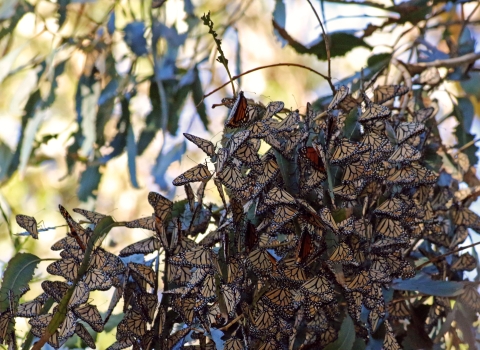Pacific Southwest Regional Director Paul Souza, along with leadership and staff from the Carlsbad Fish and Wildlife Office joined with state and county partners and elected officials to celebrate the 20th anniversary of the Western Riverside County Multiple Species Habitat Conservation Plan. The October 11 event at the Hidden Valley Nature Center in Riverside, California, included former Riverside County Supervisor Tom Mullen, one of the proponents of the plan in the 1990s, along with leaders from the Regional Conservation Authority which is responsible for implementing the Plan. Approved in 2004, the Western Riverside County Plan is one of the largest, most complex habitat conservation plans in the country, encompassing more than 1.26 million acres and providing incidental take coverage for 146 listed, unlisted and rare plants, animals, and fish.
To support the conservation goals of the plan, more than $89,000,000 in funding from section 6 of the Endangered Species Act has been provided in support of the Plan. Ultimately, the Plan commits to 153,000 acres of new conservation lands which will be connected to existing conservation areas, providing a total of 500,000 acres of diverse habitats, including: riparian riparian
Definition of riparian habitat or riparian areas.
Learn more about riparian , vernal pool coastal sage scrub and grasslands that support the threatened coastal California gnatcatcher and endangered San Bernardino kangaroo rat and Delhi sands flower-loving fly.
In remarks at the event, Regional Director Souza reminded attendees that "it can be easy to get caught up in the crisis of the moment, but it is important to pause and celebrate achievements like the Western Riverside County Plan."
To date, 70,278 acres of the 153,000 acres of habitat have been conserved using a combination of local, State, and Federal funding. The newly conserved lands further the mission of the federal “America the Beautiful” effort and California’s 30X30 plan. In addition to protecting native species and helping to address wildlife connectivity needs in the region, the plan streamlines the environmental permitting process for needed infrastructure like transportation and housing.
Currently, there are 26 Permittees under the Plan, including 18 cities plus several Riverside County districts, along with two state agencies. This Plan exemplifies "what serious, committed, dedicated people can accomplish together," said Souza.




